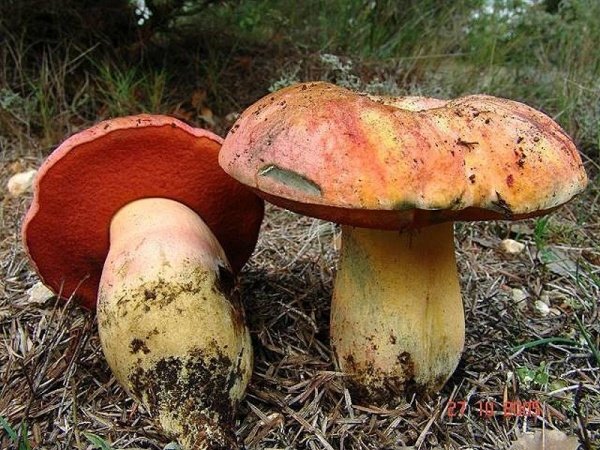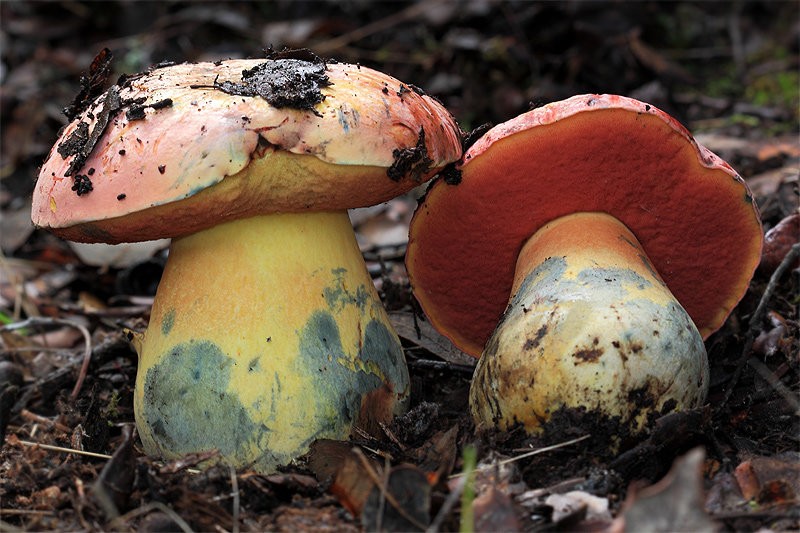Wolf boletus (Red mushroom)
- Division: Basidiomycota (Basidiomycetes)
- Subdivision: Agaricomycotina (Agaricomycetes)
- Class: Agaricomycetes (Agaricomycetes)
- Subclass: Agaricomycetidae (Agaricomycetes)
- Order: Boletales (Boletales)
- Family: Boletaceae (Boletaceae)
- Rod: Red mushroom
- Type: Rubroboletus lupinus (Wolf boletus)

The wolf boletus has a hat with a diameter of 5-10 cm (sometimes even 20 cm). In young specimens, it is semicircular, later becoming convex or protruding convex, protruding sharp edges are often formed. The skin can be of various color options with pink and red hues. Young mushrooms are often lighter, have a grayish or milky-coffee color, which turns into dark pink, red-pink or brown with a reddish tint with age. Sometimes the color can be reddish-brown. The skin is usually dry, with a slight felty coating, although older mushrooms have a bare surface.
For boletus boletus characterized by thick dense pulp, light yellow, tender, bluish. The base of the stem is reddish or red-brown. The mushroom has no special taste or smell.
The leg grows up to 4-8 cm, it can be 2-6 cm in diameter. It is central, cylindrical in shape, thickened in the middle part and narrowed towards the base. The surface of the leg is yellowish or even bright yellow, there are red or red-brown spots. The lower part of the leg may be brownish in color. The stipe is usually smooth, but sometimes yellow granules may form on the top of the stalk. If you press on it, it turns blue.
The tubular layer also turns blue when damaged, but in general it is colored grayish yellow or yellow. Young mushrooms have very small yellow pores, which later turn red and increase in size. Spore powder of olive color.

Wolf boletus a fairly common species among bolets that grows in oak forests in northern Israel. It occurs from November to January in scattered groups on the ground.
It belongs to the category of conditionally edible mushrooms. It can be eaten after boiling for 10-15 minutes. In this case, the broth must be poured out.









